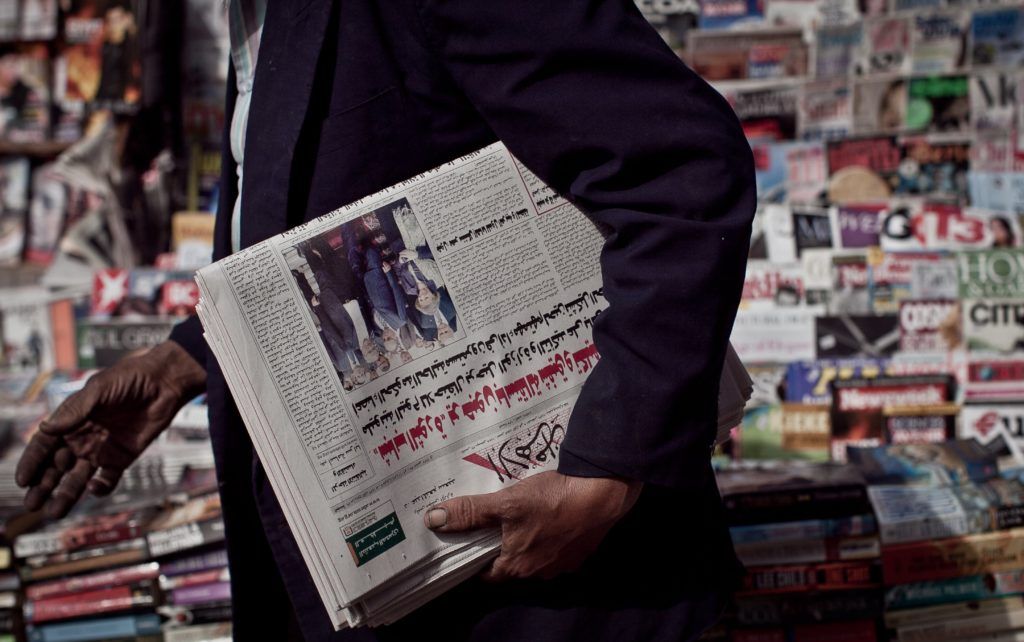Egypt’s local press coverage of government activities has continued to be editorially partial in recent months, driven by the same pre-revolution biases, according to a joint report released Thursday by the Arabic Network for Human Rights Information (ANHRI) and the Egyptian Organization for Human Rights (EOHR).
The report analyzes the media coverage of the ruling Supreme Council of the Armed Forces (SCAF), the judicial system, the political space and elections, covering the period between 10 July and 30 July. It surveyed newspapers, news websites and TV shows both state-run and privately owned.
According to 52-page report, the daily state-run Al-Akhbar newspaper is the most supportive of the SCAF, while the privately-owned Al-Masry Al-Youm adopted the most critical approach to the military rulers during the 20-day period. The privately-owned Al-Shorouk newspaper, however, maintained a balance in articles that mention the SCAF.
Both the state-run Al-Akhbar and Al-Ahram “dealt with the news and issues of SCAF the same way they used to deal with the ousted President Mohamed Hosni Mubarak,” said the report.
The press coverage of state newspapers has conformed to the same editorial policy of gratifying those in power, said Mahmoud Bassiouny, general coordinator of the media monitoring project in EOHR.
“The state-run newspapers replaced the picture of Mubarak and his son Gamal with SCAF members and Prime Minster Essam Sharaf,” added Bassiouny.
As for news websites, the privately-owned Masrawy and the state-run Al-Ahram generally demonstrated support for the SCAF, whereas the privately-owned and left-leaning website Al-Badil showed a tendency to criticize the military council’s performance.
Nafeesa al-Sabagh, the researcher who worked on the report, attributed the lack of change in the state media’s coverage to the fact that “the people who used to work in most of the state media institutions during Mubarak’s regime didn’t change after the revolution, despite the change in the top leaders.
“Another reason is that it is not easy for any media institution to rapidly transform its decades-old mechanisms and instill new methodologies in a small period of time,” added Sabagh.
With regards to the coverage of political issues, presidential hopeful Amr Moussa received more coverage from the state-run newspapers Al-Ahram and Al-Akhbar than from independent daily papers, which carried fewer news stories about him, adopting a mixture of criticism and praise.
The most heavily covered government official in newspapers and television shows was Prime Minister Essam Sharaf, followed by Interior Minister Mansour al-Essawy. Foreign Minister Mohamed Kamel Amr, meanwhile, topped the coverage of the news websites, ahead of Sharaf.
From among the political parties, the Wafd Party took the biggest share of coverage in the newspapers, followed by the Freedom and Justice Party, the political arm of the Muslim Brotherhood group. However, the total figures for the Waft Party include coverage in its own newspaper, which was part of the survey sample. The Freedom and Justice Party received the highest coverage by news websites.
The Muslim Brotherhood and its Freedom and Justice Party were the two religious groups with the most coverage on television talk shows, while the Ghad Party got the most coverage of all non-religious groups, contrasting with the April 6th Youth Movement, which got the least attention.
The report also noted that the state-run media following the revolution provided neutral and sometimes “sympathetic” coverage of Islamist parties, hinting at the reconciliatory approach adopted by the SCAF towards these religious groups, marking a departure from the hostile approach adopted by the Mubarak regime.



